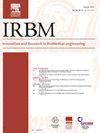Biomechanical Effects of Osteoporosis on the Sacroiliac Joint After Lumbosacral Fusion Surgery
IF 4.2
4区 医学
Q1 ENGINEERING, BIOMEDICAL
引用次数: 0
Abstract
Objective
Lumbar/lumbosacral fusion is a common surgical approach for treating lumbar degenerative disc disease, a condition that disproportionately affects a large portion of elderly population. Osteoporosis, another age-related disease, is also prevalent among the elderly. Previous studies have elucidated the biomechanical effects of osteoporosis on the postoperative lumbar spine. However, little attention has been paid to adjacent sacroiliac joints (SIJs), and it remains unclear whether or how osteoporosis impacts the SIJ biomechanics. The aim of this study was to determine the effects of osteoporosis on the range of motion (ROM) and stress distribution within the SIJs following lumbosacral fusion, and to identify potential implications for postoperative outcomes.
Methods
The previously validated, normal human lumbo-pelvic finite-element model was used to simulate the interbody fusion procedures at L5–S1, and an osteoporotic condition was simulated by reducing bone mechanical properties in the model. The ROM and stress distribution within the left and right SIJs were compared between the surgical models with and without osteoporosis in flexion, extension, lateral bending, and axial rotation motions.
Results
The presence of osteoporosis led to a significant increase in SIJ ROM: 38.9% and 36.5% in flexion, 19.5% and 15.9% in extension, 33.3% and 40.0% in lateral bending, and 26.38% and 20.0% in axial rotation, respectively, for left and right SIJs. Moreover, higher stress concentrations were observed at the SIJs in the osteoporotic model.
Conclusion
Osteoporosis exacerbates the SIJ motion and stress after lumbosacral fusion, indicating a potential increased risk of SIJ instability and degeneration among affected patients. The findings underscore the importance of considering osteoporosis in preoperative planning and postoperative management strategies for lumbosacral fusion procedures.

腰骶融合术后骨质疏松对骶髂关节的生物力学影响
目的腰椎/腰骶融合术是治疗腰椎间盘退行性疾病的常用手术方法,这种疾病在很大一部分老年人中发病率很高。骨质疏松症,另一种与年龄有关的疾病,在老年人中也很普遍。先前的研究已经阐明了骨质疏松症对术后腰椎的生物力学影响。然而,对邻近骶髂关节(SIJ)的关注很少,骨质疏松症是否或如何影响SIJ的生物力学尚不清楚。本研究的目的是确定骨质疏松症对腰骶融合术后sij内活动范围(ROM)和应力分布的影响,并确定对术后结果的潜在影响。方法采用先前验证的正常人腰骨盆有限元模型模拟L5-S1椎间融合过程,并通过降低模型中的骨力学性能来模拟骨质疏松状况。比较有骨质疏松和无骨质疏松的手术模型在屈伸、侧屈和轴向旋转运动中左、右sij内的ROM和应力分布。结果骨质疏松的存在导致左、右SIJ的ROM明显增加:屈曲38.9%、36.5%,伸展19.5%、15.9%,侧弯33.3%、40.0%,轴向旋转26.38%、20.0%。此外,在骨质疏松模型中,sij处观察到较高的应力浓度。结论骨质疏松加剧了腰骶融合术后SIJ的运动和应激,提示患者SIJ不稳定和退变的风险增加。研究结果强调了在腰骶融合手术的术前计划和术后管理策略中考虑骨质疏松症的重要性。
本文章由计算机程序翻译,如有差异,请以英文原文为准。
求助全文
约1分钟内获得全文
求助全文
来源期刊

Irbm
ENGINEERING, BIOMEDICAL-
CiteScore
10.30
自引率
4.20%
发文量
81
审稿时长
57 days
期刊介绍:
IRBM is the journal of the AGBM (Alliance for engineering in Biology an Medicine / Alliance pour le génie biologique et médical) and the SFGBM (BioMedical Engineering French Society / Société française de génie biologique médical) and the AFIB (French Association of Biomedical Engineers / Association française des ingénieurs biomédicaux).
As a vehicle of information and knowledge in the field of biomedical technologies, IRBM is devoted to fundamental as well as clinical research. Biomedical engineering and use of new technologies are the cornerstones of IRBM, providing authors and users with the latest information. Its six issues per year propose reviews (state-of-the-art and current knowledge), original articles directed at fundamental research and articles focusing on biomedical engineering. All articles are submitted to peer reviewers acting as guarantors for IRBM''s scientific and medical content. The field covered by IRBM includes all the discipline of Biomedical engineering. Thereby, the type of papers published include those that cover the technological and methodological development in:
-Physiological and Biological Signal processing (EEG, MEG, ECG…)-
Medical Image processing-
Biomechanics-
Biomaterials-
Medical Physics-
Biophysics-
Physiological and Biological Sensors-
Information technologies in healthcare-
Disability research-
Computational physiology-
…
 求助内容:
求助内容: 应助结果提醒方式:
应助结果提醒方式:


